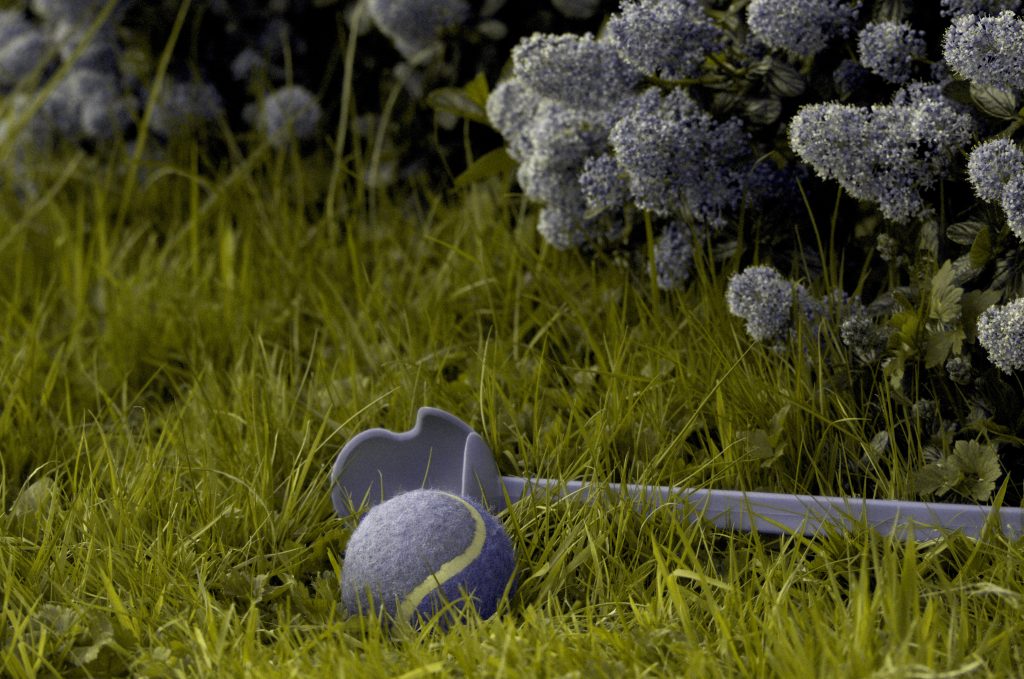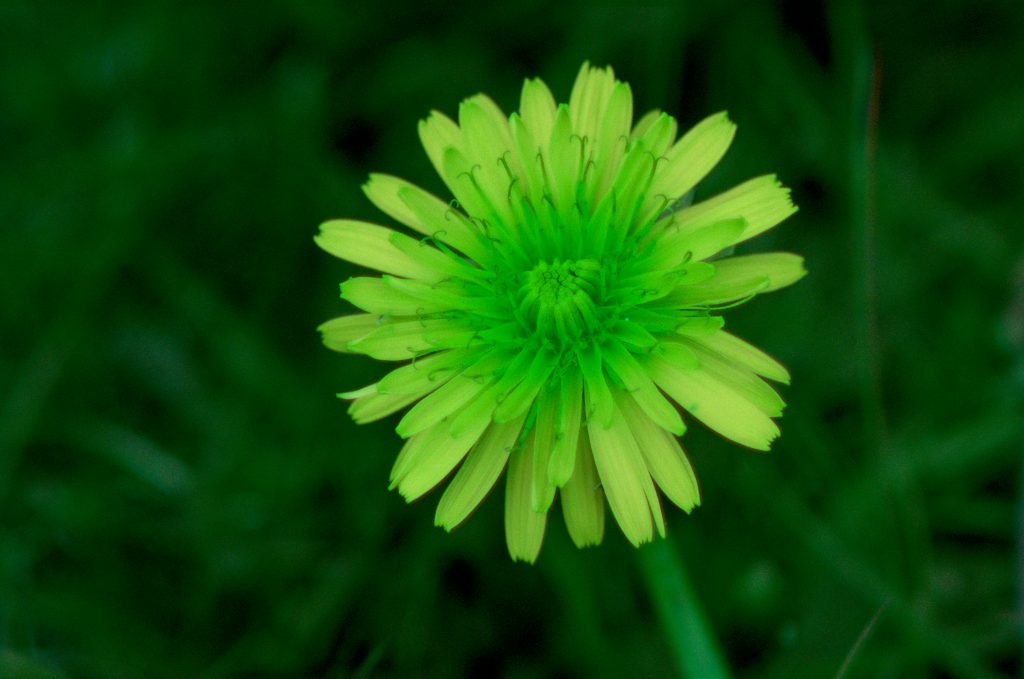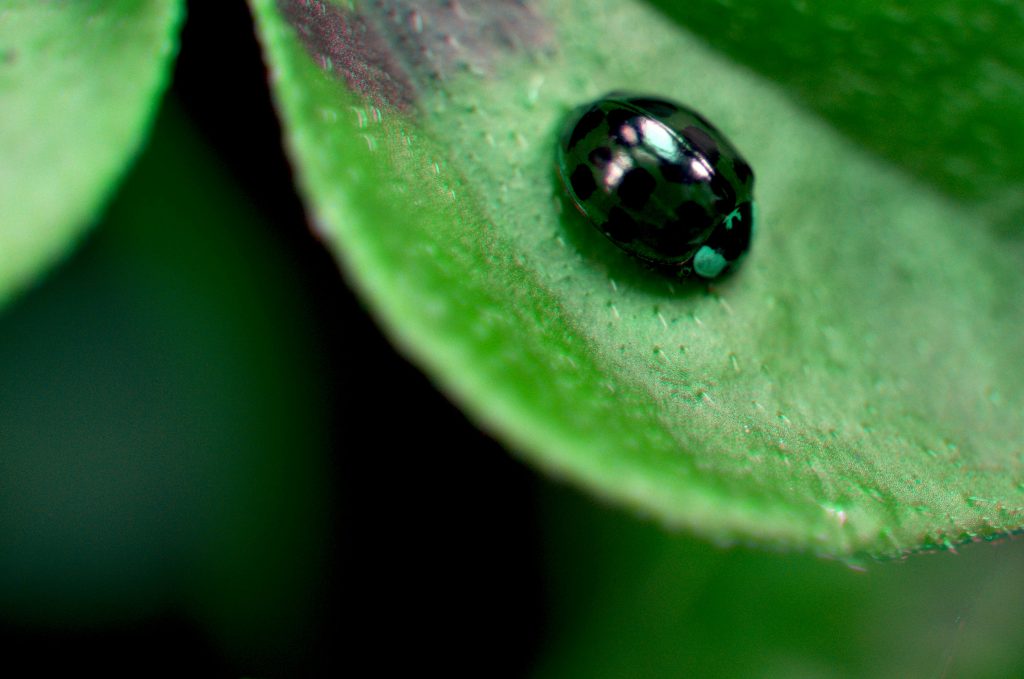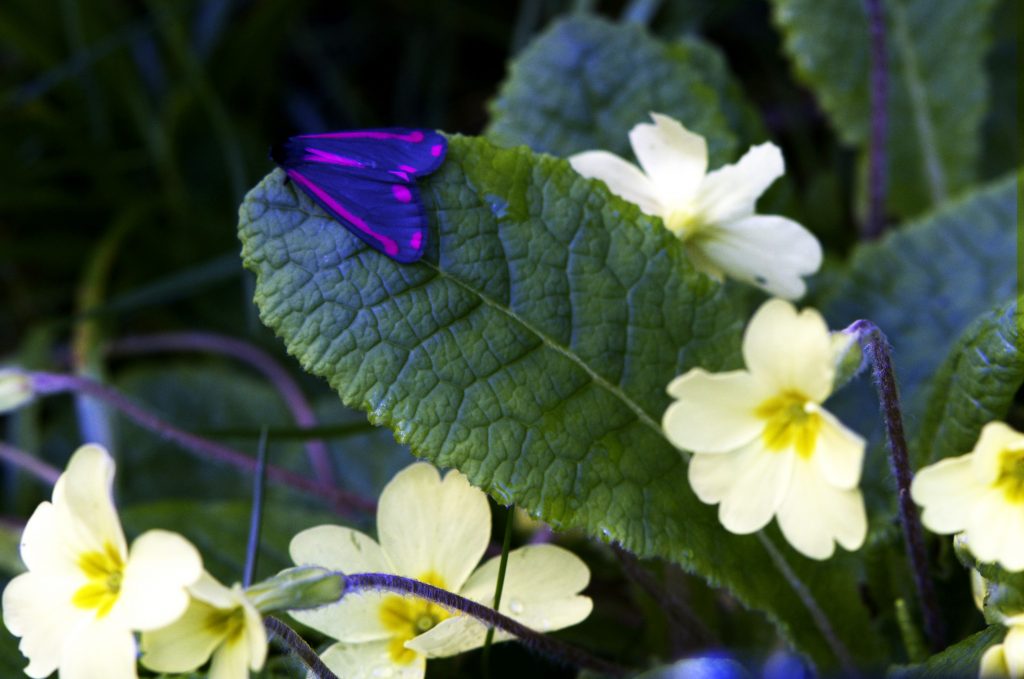We see in colour because we have three types of cells in our eyes, called ‘cones’, which are sensitive to blue, green and red light. The colours we see depend on which cones are stimulated most. For example, when our red cones are strongly stimulated but the other cones aren’t, we see the colour red.
Many animals see the world differently to us because the cones in their eyes are different. Some animals only have two types of cones instead of three. Others have cones which are sensitive to different kinds of light—some can even see light which is completely invisible to us.
Move the arrows on the photographs below to discover how a rat, dog, honeybee, ladybird, fish and bird see the world compared to you.
Rat vision
Common brown rats have two types of light-sensitive cones in their eyes. One is sensitive to ultraviolet light (which humans can’t see at all), and the other is sensitive to yellow colours. So, a rat sees everything as being either ultraviolet or yellow.
Dog vision
We can tell the difference between red, yellow, and green because we have cones in our eyes that are sensitive to red and green light. But dogs only have one type of cone that is sensitive to this part of the colour-spectrum, so they see all three colours the same. However, they see blue in the same way that we do—like the flowing bush in this photograph.
Honeybee vision
Like us, bees see colour with three types of light-sensitive cones, but theirs are sensitive to shorter wavelengths of light. Whereas we see blue, green, and red, bees see ultraviolet, blue and green, but not red.
Many flowers have patches of colour in the centre that are only visible in ultraviolet light. Because bees can see ultraviolet light, they can use these patches to find nectar and pollinate the flower.
Ladybird vision
Ladybirds are red with black spots, right? Well, not if you’re another ladybird! Ladybirds can’t see red at all, so to each other they just look black.
Goby vision
Goby are a type of fish. Like us, they have cones that are sensitive to red, green, and blue light. However, they do not see as far into the longwave spectrum as us, which means that they tend to see more yellow and less red.
Bird vision
Birds have some of the best eyes in the animal kingdom.
Whereas we have three types of light-sensitive cells in our eyes, birds have four. Not only do they see all the colours that we see, but they can see ultraviolet colours as well, which we can’t. The world is a much more colourful place to a bird.
The moth in this picture has strong ultraviolet colours where the red markings are, so while the markings look red to us, birds see them as a sort of red-ultraviolet colour and much more vivid.
To learn more about animals’ super sensing powers, visit Supersenses at the National Science and Media Museum between 15 July and 8 October 2017.
Created with the support of Exeter Sensory Ecology and Evolution Group.






I’ve just missed this exhibition will it be returning to the museum at any time?
wow animal vision is cool!!